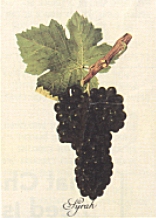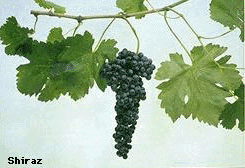

Syrah. Petite Sirah. Shiraz. Three wines practically designed to confuse the consumer. Are they the same? Are they different? And if so, how? Today we look at the "common knowledge" about the three wines, plus we put it to the test with some blind tastings.


| Late 1800's | Syrah planted in California; it is called "Petite Sirah" after one of the French names for Syrah. |
| c. 1880 | Dr. Durif of southern France promotes the "Durif grape" as a mildew-resistant varietal. It never really caught on in France (except in limited quantities), but some of it is planted in California. |
| 1880's-1890s | Phylloxera (a louse) destroys vineyards across much of California. Higher yielding vines (like Durif) are often used to replace lower yielding vines (like Syrah). |
| 1888 | Chief Executive Viticultural Officer for California announces that the varietal in California known as "Petite Sirah" is the same grape as "Syrah" from the Rhone Valley of France. |
| c. 1915-1933 | Prohibition Era. Unemployment for many vines, though Petite Sirah does fairly well as a wine for home brewers. |
| c. 1970 | Beginning of California wine boom. Petite Sirah grows rapidly in acreage. |
| Early 1970's | No clear consensus as to what California's "Petite Sirah" is: some say Durif, others say a relative of Syrah. |
| Late 1970's / Early 1980's | French viticultural experts visit California and declare with certainty that America's "Petite Sirah" is the Durif grape. |
| c. 1980-present | The "Rhone Rangers", an informal group of winemakers who argue that California's microclimates are best suited for vines like those in France's Rhone Valley, begin to market Rhone style wines like Syrah. "Petite Sirah" is often held in contempt as a "lesser grape" compared to Syrah. |
| 1991 | Geneticist Carole Meredith of the University of California at Davis uses DNA profiling to identify California grape varietals. Her conclusions about Petite Sirah:
|
"While winemakers may be content to live with the genetic heterogeneity that is Petite Sirah today, varietal labeling regulations may eventually force the issue. One day the winemakers may be asked to agree upon a single variety that can bear the name Petite Sirah. Which one will they choose?" - C. Meredith, "What is Petite Sirah?", Practical Winery and Vineyard Vol. 16, No. 6 (March/April 1996), pp. 23-24.
In March 1997 we decided to put the syrah-sirah-shiraz mystery to the test, with a blind tasting of Syrah, Shiraz, and Petite Sirah. It was a bring-what-you-can affair (hey, you try to find good wines in a little rural Indiana town!) We ended up with five wines: a $6 French syrah, a $12 California syrah, a $14 Australian shiraz, a $5 Australian shiraz/cabernet blend, and a $15 ($7 on sale) California petite sirah. Could our panel of "experts" (i.e., ordinary folk) tell the difference... and which did they prefer?
The results were somewhat inconclusive. The only wine that seemed to be an excellent example of their varietal was the Guenoc petite sirah, which was recognizable to those of us who had tasted it before by its bold, spicy and peppery character. Beyond that, we had trouble telling shiraz from syrah (although some did discern the cabernet sauvignon blended in the Queen Adelaide). However, the general consensus was that we needed some more prime examples of syrahs and shiraz to perform this experiment correctly!
My thanks to Dr. Carole Meredith of the Department of Viticulture and Enology, University of California at Davis, for her informative article and personal communications regarding some of the above points.